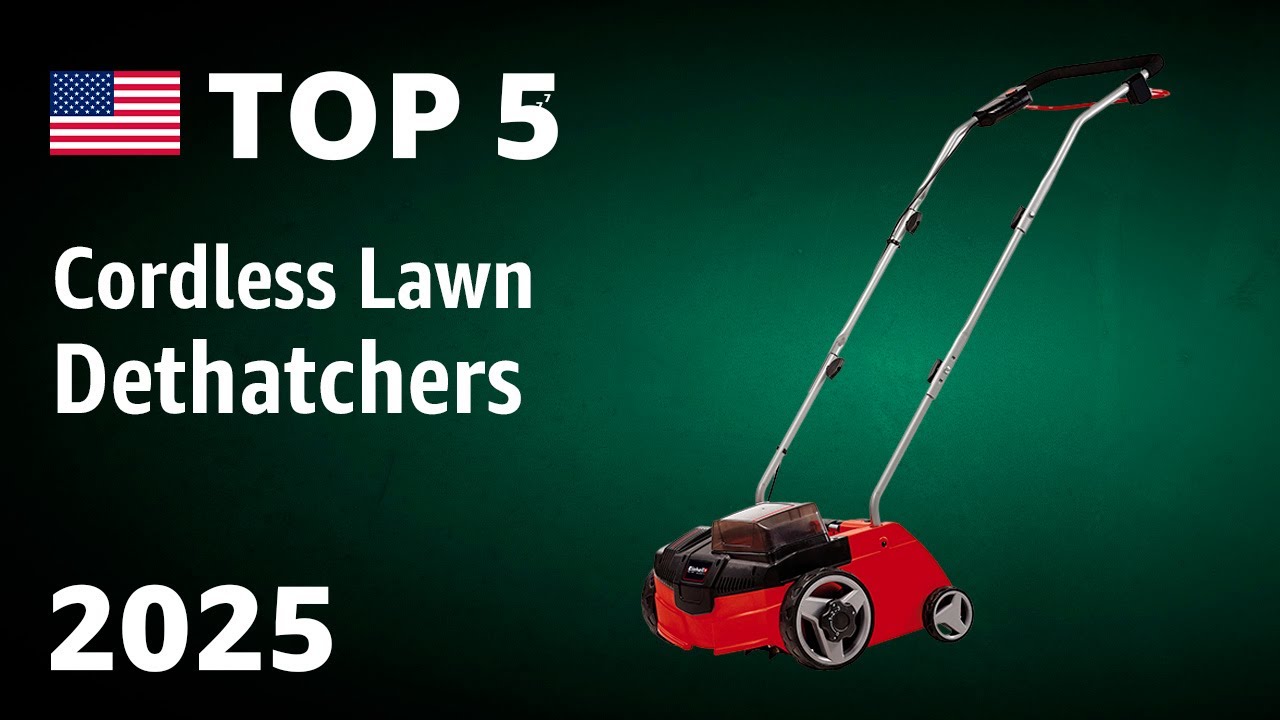Electric Riding Lawn Mowers: Eco-Friendly and Efficient
Overview of Electric Riding Lawn Mowers
Electric riding lawn mowers are a groundbreaking innovation in the lawn care industry that offer an eco-friendly and efficient alternative to traditional gas-powered machines. As environmental concerns and the necessity for sustainable practices rise, more homeowners are considering electric riding lawn mowers as a viable option for maintaining their lawns. These machines operate on rechargeable batteries, eliminating the need for gas and contributing to reduced greenhouse gas emissions. They are designed to provide users with the power, speed, and efficiency needed to handle the large swathes of land while also being gentle on the environment.

In contrast to their gasoline counterparts, electric riding mowers produce less noise, creating a quieter and more pleasant experience for users and neighbors. Many electric mowers also feature advanced technology that enhances usability and efficiency. This can include features such as variable speed controls, automated cutting height adjustments, and even smartphone connectivity for monitoring performance and scheduling. As these mowers continue to evolve, manufacturers strive to enhance battery life and make them more user-friendly, addressing common concerns such as range anxiety and charging times.
Moreover, the maintenance costs associated with electric mowers tend to be significantly lower since they do not require oil changes, spark plug replacements, or fuel purchases. This can lead to substantial savings over time, making electric riding lawn mowers an appealing option for both casual users and professional landscapers. The upfront investment may be higher than gas-powered models; however, the long-term benefits, including savings on fuel, maintenance, and a healthy environment, are persuading an increasing number of homeowners to make the switch. As a result, electric riding lawn mowers have become synonymous with sustainability, efficiency, and modern technology, representing a significant shift in how we approach lawn maintenance.
Environmental Impact of Electric Riding Lawn Mowers
The use of electric riding lawn mowers greatly reduces the carbon footprint associated with lawn care. Traditional gas-powered mowers are significant contributors to air pollution, emitting harmful gases, including carbon monoxide and hydrocarbons. This is particularly concerning in urban areas, where air quality can already be compromised by traffic emissions. On the contrary, electric mowers operate without emissions during use, allowing for a healthier environment not just for homeowners but for the wider community as well.
Additionally, the manufacturing process of electric mowers is increasingly focusing on sustainable practices. Many companies are committing to using recyclable materials for their mowers’ bodies and packaging, further diminishing their environmental impact right from the production stage. Furthermore, the electric battery technology has seen advancements, leading to longer-lasting batteries that can be reused or recycled at the end of their life cycle, forming a closed-loop system. This approach is in line with eco-conscious consumer trends aimed at minimizing waste and promoting renewable resources.
Moreover, transitioning to electric riding lawn mowers helps reduce noise pollution in residential neighborhoods. Gas-powered mowers are notorious for their loud engines, which can be a nuisance to neighbors and disrupt wildlife. Electric models typically operate at lower decibel levels, making lawn maintenance a more serene experience. The quieter operation of electric mowers opens possibilities for mowing during the early morning or late evening hours, times when gas mowers may be deemed inconsiderate, thus accommodating the schedules of those living nearby.

Cost Analysis: Electric vs. Gas-Powered Mowers
When considering electric riding lawn mowers, a thorough cost analysis is imperative for homeowners. Initially, electric mowers tend to have a higher purchase price compared to their gas-powered alternatives. However, it is essential to weigh this initial investment against long-term savings to gain a fuller perspective on costs. Electric mowers require significantly less maintenance; owners do not need to purchase oil, filters, or spark plugs, all of which contribute to ongoing expenses for gas mowers. Over the years, these savings can accumulate substantially.
Besides the maintenance savings, fuel costs play a crucial role in the overall expense of operating lawn care equipment. With rising fuel prices, the cost per mow with gas-powered mowers can severely impact household budgets. Electric mowers, on the other hand, benefit from lower energy costs and energy-efficient usage. Charging an electric mower typically costs only a fraction of what it would to refuel a gasoline mower, making it a more economical choice over time.
Lastly, it is worth considering the potential resale value of electric riding lawn mowers. As the demand for eco-friendly products increases, electric mowers maintain strong resale value compared to traditional mowers. Many buyers are willing to pay a premium for environmentally friendly options, making it a sound financial decision for homeowners thinking ahead. This factor, combined with the previously mentioned savings, can make electric mowers an economically smart choice for savvy consumers.
Technology in Electric Riding Lawn Mowers
Advancements in technology have propelled electric riding lawn mowers into the forefront of the lawn care industry. Today’s models integrate features that enhance user experience and maximize efficiency. For instance, GPS technology allows users to map their lawns, ensuring every inch of grass is evenly mowed without missing spots. Some manufacturers feature automated systems that optimize mowing patterns based on the terrain, reducing the time and effort needed for lawn maintenance.
Battery technology has also seen significant improvements. With longer run times and faster charging capabilities, battery-powered mowers have become increasingly efficient. Homeowners no longer need to worry about their mower dying in the middle of the lawn; many new electric models can cover larger areas on a single charge. Furthermore, advancements in lithium-ion battery technology are making it possible for these batteries to last longer and perform better than ever before, maintaining power even as the battery drains.
Smart connectivity is another highlight of modern electric riding mowers. Many models now offer Bluetooth capabilities, enabling users to connect their mowers to smartphones for initial setup, real-time monitoring, and maintenance reminders. Through dedicated apps, homeowners can even schedule mowing times or review mowing history, making lawn care easier to manage than ever before. Such technological features make electric riding lawn mowers user-friendly and appealing to tech-savvy individuals who appreciate efficient lawn care solutions.
Maintenance and Care for Electric Riding Lawn Mowers
Maintaining electric riding lawn mowers is relatively straightforward and contributes to their reputation for being low-maintenance. One of the significant advantages of electric mowers is that they do not require oil changes, unlike gas-powered machines that need regular maintenance to stay operational. Consequently, homeowners can enjoy lawn care without the hassle and cost of oil disposal and frequent visits to the service station.
However, owners should still keep an eye on their mower’s battery health. Regularly checking connections, cleaning battery terminals, and ensuring they are charged and stored correctly will prolong battery life. Additionally, some electric riding mowers come with built-in battery management systems that help optimize battery performance, ensuring homeowners get the best possible experience. It is important to follow manufacturer guidelines for charging and using batteries to maintain their efficiency.
Furthermore, keeping the mower clean is essential for its longevity. Debris such as grass clippings and dirt can accumulate on the blades and deck, potentially affecting performance. Regularly cleaning the underside of the mower after each use helps prevent buildup and maintains cutting efficiency. Additionally, inspecting the blades for dullness and sharpening them as needed (typically once a season) can make mowing easier and improve the overall appearance of the lawn. Proper care and regular maintenance of electric riding lawn mowers can significantly enhance their lifespan and performance over the years.
Frequently Asked Questions About Electric Riding Lawn Mowers
One of the most common questions regarding electric riding lawn mowers is about their runtime. Homeowners often want to know how long they can mow before needing to recharge. Most modern electric riding mowers can run for approximately 1.5 to 2.5 hours on a full charge, depending on usage and terrain conditions. This usually allows enough time to mow an average-sized lawn without interruptions. Understanding the runtime of a specific model helps users plan their mowing schedules effectively.
Another consideration is the question of charging times. The charging time for electric riding mowers varies between models and battery types, with most units requiring around 4 to 8 hours for a full charge. Some advanced models even offer fast charging capabilities, reducing the wait time significantly. Overall, homeowners should check the specifications of their chosen mower to understand the charging process and its implications for usability.
Lastly, potential buyers often have concerns about durability and performance compared to gas-powered mowers. While electric riding lawn mowers may have traditionally lagged behind gasoline models in terms of power and efficiency, recent technological advances have closed the gap. Many electric mowers now feature high-torque motors capable of handling various grass types and densities. When choosing a model, prospective users should assess performance ratings and user reviews to gauge how a specific mower will perform in their particular lawn setting.